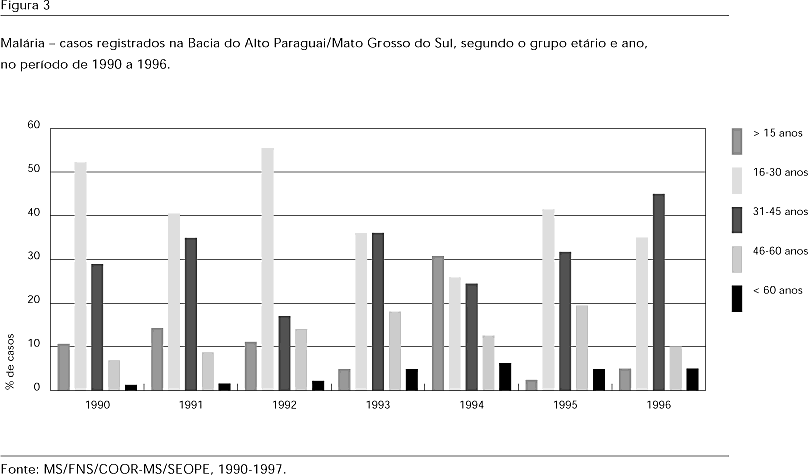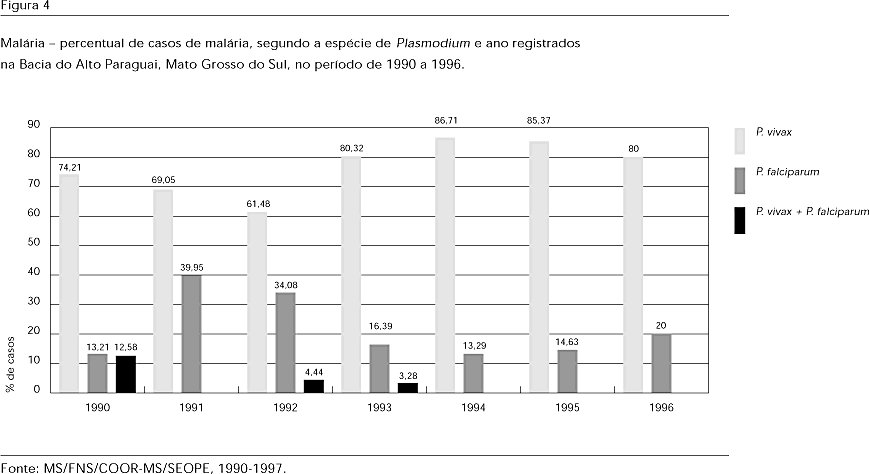Through the Regional Office of the Brazilian National Health Foundation in the State of Mato Grosso do Sul, we obtained numerical data on malaria for the Upper Paraguay Basin (UPB): 159 cases in 1990, 126 in 1991, 135 in 1992, 61 in 1993, 143 in 1994, 41 in 1995, and 20 in 1996, the majority of which were imported cases. There were no autochthonous cases in 1990, and since 1991 the rates of over 15% dropped to around 1.60%. Imported cases, corresponding to 0.63% in 1990, increased in 1991 and 1992 to some 1.50%, and to 3.28% in 1993. Induced cases were recorded only in 1991 and 1992 (less than 1%). Most cases were between 16 and 45 years of age. There was a predominance of Plasmodium vivax in the thick blood smears. Although autochthonous cases of malaria are not the majority, the disease is still an important public health problem in the UPB in the presence of the Anopheles (N.) darlingi vector and human migration into the region.
Anopheles; Plasmodium vivax; Malaria; Epidemiology





